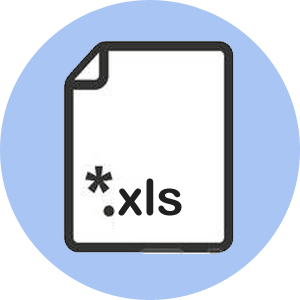ProGP683 (Flagellin)
Home -> ProGPdb -> Search ProGP -> Display data
| ProGP ID | ProGP683 (Flagellin) |
| Validation Status | Characterized |
| Organism Information | |
| Organism Name | Selenomonas sputigena |
| Domain | Bacteria |
| Classification | Phylum : Firmicutes Class : Negativicutes Orders : Selenomonadales Family : Selenomonadaceae Genus : Selenomonas Species : sputigena |
| Taxonomic ID (NCBI) | 546271 |
| Genome Information | |
| GenBank | CP002637 |
| EMBL | CP002637 |
| Gene Information | |
| Gene Name | Selsp_0329 |
| GenBank Gene Sequence | NZ_GG698598.1 |
| Protein Information | |
| Protein Name | Flagellin |
| UniProtKB/SwissProt ID | C9LY14 |
| NCBI RefSeq | WP_006193737.1 |
| EMBL-CDS | AEB99302.1 |
| UniProtKB Sequence | >tr|C9LY14|C9LY14_SELS3 Flagellin OS=Selenomonas sputigena (strain ATCC 35185 / DSM 20758 / VPI D19B-28) OX=546271 GN=Selsp_0329 PE=3 SV=1 MALVVKNNMMAVNTLNTLNKNQSALSTSLKQVSSGMKINGAVDDASGYAISERMRVQIRS LDQDNQNTQNGNSMMKVAEGAVSSTVDILKTLKEKVINAANDTNTDDDRLTIQKELNQSI DQINDNANITFNGKYLVDGTHNQKVTATTTTFTNQSMSTATVATSAMTGLLDRTGRNLNI HSQDTITVSYVNQGKTETTSFKVSTQTFSEVIKRLSGTGIVGGMATDVGATSVIGTNVAG DTVYTASGESAISLYAAGTGVGKSVGGITFSITDTQGNINKSANAVLDAFSETVRAQDNS QDNSMNFQIGTRANQAIRVGMTDMRAQALGLQGSDGSTLNISTRDKANAAINVLDNAISK ALDQQTTIGAVQSRLNYTSQNLTTASENVQASESTIRDADMAKAMTNYTKNNVLMQAAQA MLAQANQSSSGVLSLLQ |
| Sequence length | 437 AA |
| Subcellular Location | Flagellum |
| Function | Flagellin is the subunit of bacterial flagella |
| Glycosylation Status | |
| Glycosylation Type | O- (Ser/Thr) linked |
| Experimentally Validated Glycosite(s) in Full Length Protein | T149, S182, T199, T259, and S334 |
| Glycosite(s) Annotated Protein Sequence | >tr|C9LY14|C9LY14_SELS3 Flagellin OS=Selenomonas sputigena (strain ATCC 35185 / DSM 20758 / VPI D19B-28) OX=546271 GN=Selsp_0329 PE=3 SV=1 MALVVKNNMMAVNTLNTLNKNQSALSTSLKQVSSGMKINGAVDDASGYAISERMRVQIRSLDQDNQNTQNGNSMMKVAEGAVSSTVDILKTLKEKVINAANDTNTDDDRLTIQKELNQSIDQINDNANITFNGKYLVDGTHNQKVTATT*(149)TTFTNQSMSTATVATSAMTGLLDRTGRNLNIHS*(182) QDTITVSYVNQGKTETT*(199)SFKVSTQTFSEVIKRLSGTGIVGGMATDVGATSVIGTNVAGDTVYTASGESAISLYAAGT*(259)GVGKSVGGITFSITDTQGNINKSANAVLDAFSETVRAQDNSQDNSMNFQIGTRANQAIRVGMTDMRAQALGLQGS*(334)DGSTLNISTRDKANAAINVLDNAISKALDQQTTIGAVQSRLNYTSQNLTTASENVQASESTIRDADMAKAMTNYTKNNVLMQAAQAMLAQANQSSSGVLSLLQ |
| Sequence Around Glycosites (21 AA) | GTHNQKVTATT*TTFTNQSMST DRTGRNLNIHS*QDTITVSYVN SYVNQGKTETT*SFKVSTQTFS ESAISLYAAGT*GVGKSVGGIT MRAQALGLQGS*DGSTLNISTR |
| Technique(s) used for Glycosylation Detection | Western-Immunoblotting, and Monosaccharide Analysis by Reversed Phase (RP)-HPLC |
| Technique(s) used for Glycosylated Residue(s) Detection | nanoLC-ESI-MSMS. |
| Protein Glycosylation- Implication | The O-glycans present in the proteinase N-terminal region' of Flagellin protein could potentially affect recognition of flagellin monomers by TLR5 (an innate immune receptor Toll-like receptor 5). |
| Glycan Information | |
| Glycan Annotation | Six different O-glycans in the range from tri- to pentasaccharides that consisted mostly of deoxyhexose (dHex) and N-acetylhexosamine (HexNAc) residues. Monosaccharide analyses identified these sugars as rhamnose (Rha) and GlcNAc. The GlcNAc residue in the Rha3GlcNAc Tetrasaccharide identify in its reduced state, indicates that the glycan which is attached to the protein is GlcNAc. |
| Literature | |
| Year of Identification | 2018 |
| Year of Validation | 2018 |
| Reference | Rath, C.B., Schirmeister, F., Figl, R., Seeberger, P.H., Schäffer, C. and Kolarich, D., 2018. Flagellin glycoproteomics of the periodontitis associated pathogen Selenomonas sputigena reveals previously not described O-glycans and rhamnose fragment rearrangement occurring on the glycopeptides. Molecular & Cellular Proteomics, 17(4), pp.721-736. |
| Corresponding Author | Daniel Kolarich Christina Schaffer |
| Contact | Department of Biomolecular Systems, Max Planck Institute of Colloids and Interfaces, 14424 Potsdam, Germany ,Institute for Glycomics, Gold Coast Campus, Griffith University, Queensland, 4222, Australia. |

